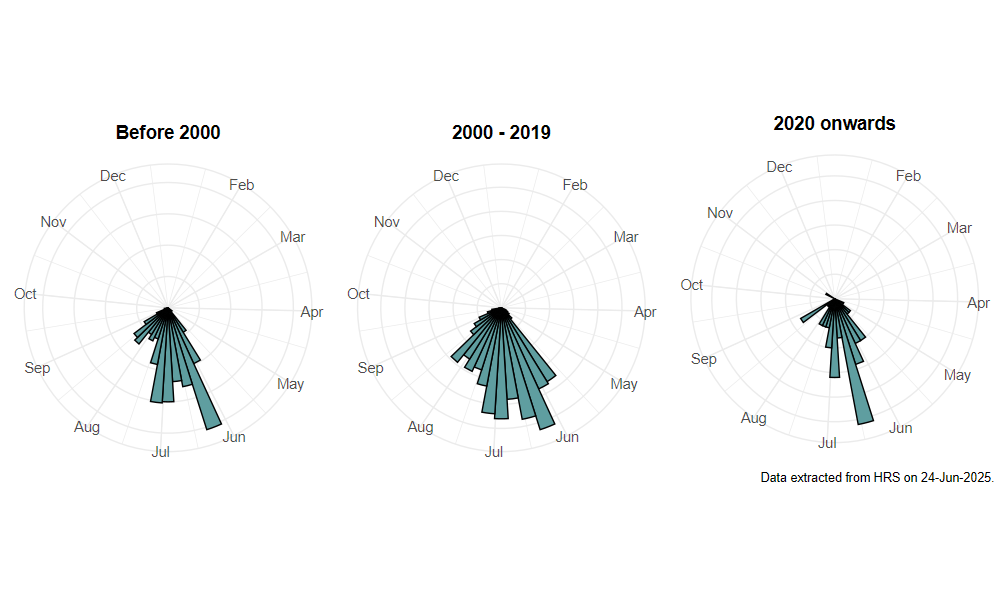Sphegina elegans Schummel, 1843
Identification
Identification difficulty = 3. ![]()
![]() according to Ball & Morris, 20241
according to Ball & Morris, 20241
Synonymy
Sphegina kimakowiczii Strobl in Stubbs & Falk (1983)2.
Biology
The larva is found in accumulations of decaying sap under bark, usually in damp shaded places including under the bark of partially submerged logs in streams. Found in wet, shady woodland, generally in much wetter situations than is typical for S. clunipes and not usually far from water. Adults appear to stay in the shade of the canopy and very few records mention adults visiting flowers, even though they do regularly visit umbels such as Hemlock Water Dropwort Oenanthe croccata.
Flight period
The following plots show the number of unique records per week excluding those reported to be of immature stages.

Distribution
Although both species are widely distributed throughout Britain, this species is much more patchily distributed than S. clunipes. It is undoubtedly much less abundant in Scotland where it is very infrequently encountered. Conversely, it appears to be the more frequent species at some localities in the West Midlands.

Trends
The following plots show the Frescalo TFactor vs year and a map of the rescaled frequency (all records) for the species.